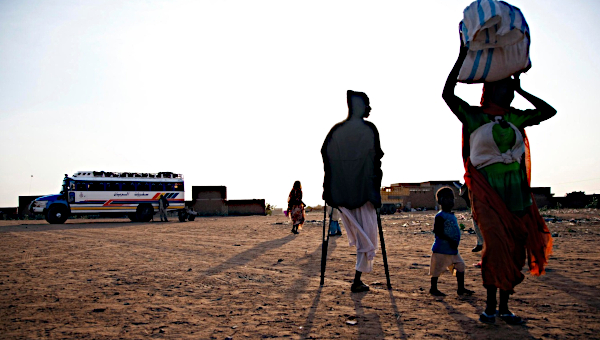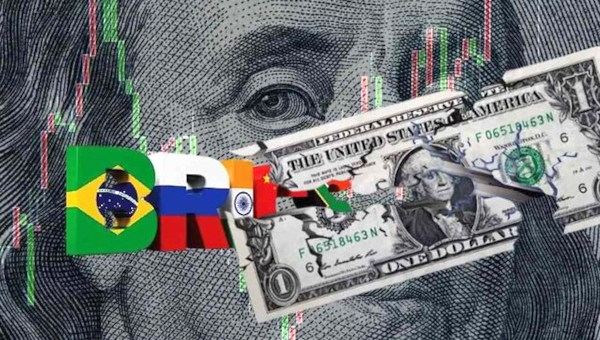The Anti-semitism of Iran’s President
Stupidity or Deliberate Strategy?
Since the death of Ayatollah Khomeini in 1989, Western governments became somewhat accustomed to the conciliatory gestures of both the Rafsanjani and Khatami administrations. The overtly hostile message and aggressive tone coming from Tehran these days therefore seems a bit surprising. Iran’s president Mahmood Ahmadinejad’s remarks describing the Holocaust as ‘a myth’ and calling for the relocation of Israel to Europe has been met with international disbelief and condemnation. Most analysts agree that if the U.S. needed any further reason to tighten screws on Iran, Ahmadinejad has provided it. Ahamdinejad is a Basiji and veteran of Iran’s hardline Revolutionary Guards. His hardline approach to the West and Israel, far from his lack of experience or stupidity, reflects the regime’s deliberate strategy of survival in light of the changing circumstances in the Middle East and the U.S. drive for empire.
Ahmadinejad’s ‘tough’ stand on Israel and apparent support for the Palestinian struggle is consistent with Iran’s overall foreign policy since the fall of the Shah in 1979. Khomeini designated the international day of Qods as the day of solidarity with Jerusalem (Islam’s third holiest city after Mecca and Medina), and regularly issued calls for the liberation of Al-Qods (the Arabic name for Jerusalem) and ‘wiping Israel and Zionism off the map.’ Furthermore, Khomeini welcomed Yasser Arafat as his first foreign visitor, but later turned against him when he began negotiating with Israel.
Khomeini’s anti-Israeli and anti-U.S. slogans are still commonplace in Tehran. Even now, almost two decades after Khomeini’s death, Friday prayers throughout the country are regularly interrupted by ‘Death to Israel, Death to the U.S.’ and similar slogans. During the 1990s, however, with a new pragmatic turn in Iran’s foreign policy initiated by Hashemi Rafsanjani, Iran officially toned down its radical anti-Israeli rhetoric. In fact, after the Oslo Agreement was signed, Rafsanjani’s administration put aside Iran’s call for the extinction of Israel, and stated publicly that it would abide by the will of the Palestinian people and respect the decisions of their political leaders.
Therefore, Ahmadinejad is not saying anything new. Questions could, however, be raised about the timing and the particularly aggressive nature of his anti-Israeli and anti-West comments, coming as they do at the time when Iran is under intense international pressure on account of its determination to proceed with its nuclear plans.
One possible explanation is that Ahmadinejad and his prominent political advisor, Mohammad Javad Ardashir Larijani, grasp the seriousness of Washington’s commitment to ‘regime change’ through military means, and are engaged in a very clever and deliberate two-pronged strategy.
Externally, they are shifting the focus of attention on Iran from the very sensitive issue of nuclear weapons development to the issue of religious or rhetorical animosity with Israel and its support for the Palestinians. This could serve two purposes. First, it would win sympathy in the Muslim world and bolster support from radical Islamic movements by advancing the idea that the West’s real intention in a possible military operation against Iran is the protection of Israel, and not Iran’s bid for nuclear capability. Ahmadinejad and his strategists may wager that this political maneuver would force the U.S. to think twice before attacking Iran, compounding the existing Muslim rage against the U.S. involvement in the region and fueling the intensity of resistance in Iraq. Second, Ahmadinejad’s hateful slander might be calculated to win concessions from Israel and the U.S. down the road: a moderation of Iran’s position toward Israel in exchange for better relations with the West.
Internally, the war of words with Israel and the West would also serve Ahmadinejad’s government just fine. While Khomeini was alive, he used such issues as the Iran-Iraq war, the Rushdie affair, and American or Israeli threats to justify the repression of dissent and cover up socio-economic problems. Ahmadinejad, who calls himself a ‘true follower’ of Khomeini, might be trying to do the same thing — creating an external crisis to justify political oppression at home and to divert people’s attentions from ever-growing domestic problems and unattainable presidential campaign promises.
The second possible explanation is that Ahmadinejad wants to take advantage of the situation in Iraq and U.S. weakness “to cut the grass under the feet of other elements in the regime that favor a more open stance with the U.S.” In other words, Ahmadinejad’s external postures are mainly aimed at disarming the pragmatic faction represented by Rafsanjani and Khatami. Ahmadinejad represents a current within the regime, which includes the Basiji and Revolutionary Guards, who feel they are being marginalized and their ideals and interests compromised by the ‘reformist’ faction. This faction may, therefore, be trying to revive Khomeini’s hardline approach to foreign and domestic issues in order to strengthen their own position in the power structure.
By taking a tough and uncompromising position on Iran’s nuclear program and attacking Israel and the West at the same time, Ahmadinejad’s faction may be trying to exert their power and marginalize the rival faction by burning all bridges between Iran and the West. In doing so, they are not even afraid to challenge Iran’s supreme leader, Ayatollah Khamenei, making him realize that without the support and loyalty of his organs of coercion, the Basiji and Revolutionary Gurds, he is powerless. Khamenei recently welcomed Israel’s withdrawal from Gaza as “positive,” but astonishingly, Ahmadinejad labeled it a “joke.” And indeed, after Ahmadinejad’s recent comments on Israel, it did not take Iran’s spiritual leader long to follow suit and call for Palestinian militants to step up their fight “to drive [the Israeli’s] out of Jerusalem.”
The above analysis, particularly the first one, clarify some important aspects of the situation. However, they do not really capture the main thrust of what has been happening in Iran with respect to both internal and external developments. It has been proven over and over that while there are conflict of interests between the conservative and pragmatic factions, they are united when the security of the regime as a whole is at stake. Given Khatami’s failure to normalize relationships with the USA, as well as his inability to overcome the regime’s crisis of political legitimacy, the growing threat of ‘regime change’ (from within and without), and the likelihood of military operation against the regime, Iran’s ruling class moved to consolidate its power through the election of a conservative-dominated Majlis (legislature) and Ahmadinejad’s assumption of executive power. However, to fend off the U.S. political and military threat to its security, they need to boost the morale of the Revolutionary Guards and the most radical elements in the regime on the one hand, and mobilize the masses behind the regime on the other. To create a regional security net, mainly as a deterrent to U.S. designs for Iran, they also need to reach out to anti-American and anti-Israeli sentiments of the Muslim population in the Arab world, rallying as many governments in the region as possible behind them. Ahmadinejad’s deliberate comments on Israel serve this purpose well.
The regime also needs a charismatic and mystical figure to elicit popular support. To this effect, since the presidential elections in Iran, many bizarre stories and rumors have circulated about Ahmadinejad, particularly the one elevating him to the level of the Imam Mahdi, whose return according to Muslims will inaugurate an era of Islamic justice. In fact, during his September speech at the UN, Ahmadinejad himself summoned the 12th Imam to reappear.
Ahmadinejad’s propaganda appears to be directed at those who brought him to power in June’s election: the downtrodden of Iranian society, and those elements susceptible to supernatural tales. This seems to be a desperate attempt to duplicate Khomeini’s success in using Islamic mystics and Shi’ia figures to mobilize people against the Shah in the 1979 revolution. It is reminiscent of the ways the mullahs sought to establish Khomeini’s charismatic leadership by claiming to have seen Khomeini’s face in the moon, or his hair inside the pages of the Quran. This tactic worked at the time, but neither is Ahmadinejad another Khomeini nor are the conditions the same today as a quarter-century ago, particularly in light of the historical failure experienced by political Islam in Iran. •





